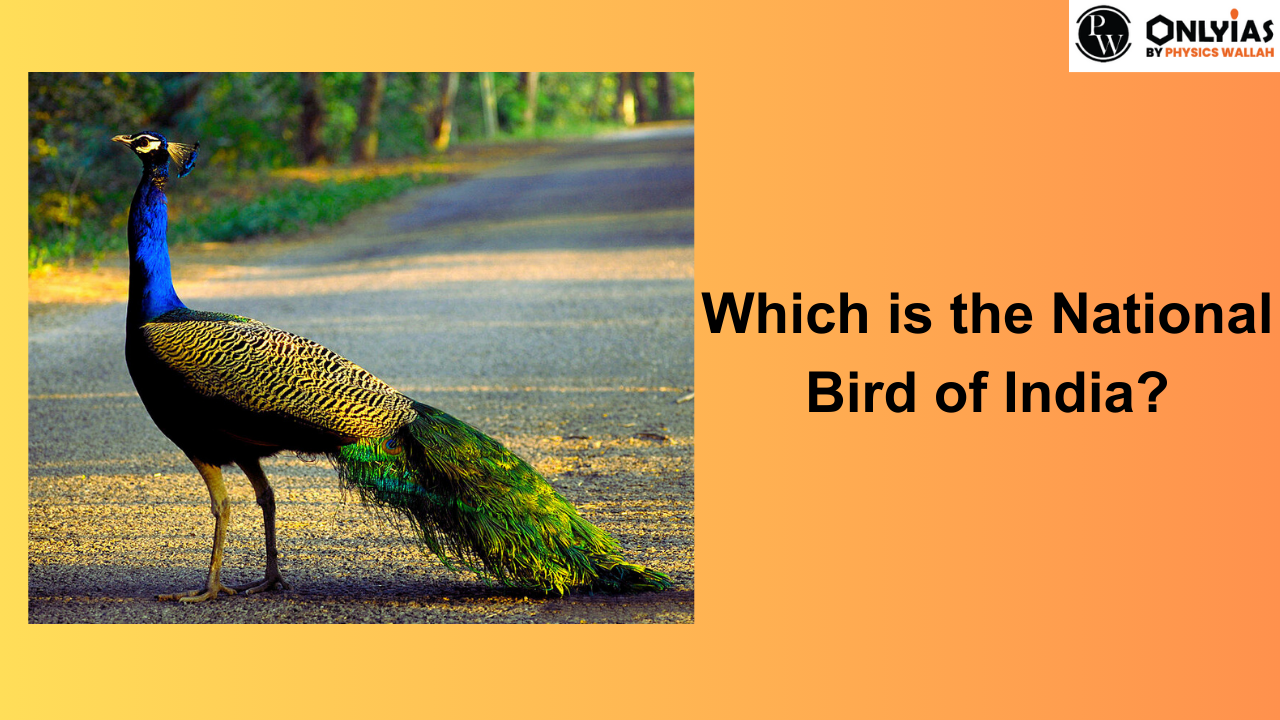Learn about the majestic National Bird of India - the Peacock. Explore its vibrant plumage, cultural significance, and fascinating behavior. Discover why it's a symbol of pride and beauty in India.

The Peacock was officially declared as India’s National Bird in the year 1963. This majestic selection was made because the peacock is not only the most auspicious of creatures but also embodies the essence of India’s rich fauna. With a long history of religious and legendary significance in Indian culture, the Peacock symbolizes various virtues.
The Peacock, scientifically known as Pavo cristatus (Linnaeus), stands as a magnificent creature characterized by its beauty, grace, and striking appearance. Its resplendent fan-shaped crest of feathers, accompanied by a distinctive white patch beneath the eye and an elegantly elongated neck, defines its unique charm. These vibrant and swan-sized birds carry a symbolism deeply ingrained in India’s identity, representing attributes such as beauty, grace, pride, and mysticism. The colors of the Peacock resonate with the very spirit of the nation, making it a fitting and cherished National Bird of India.
| National Bird of India – Peacock | |
|---|---|
| Feature | Description |
| Scientific Name | Pavo cristatus |
| Common Name | Indian Peafowl |
| Significance | Symbol of beauty, grace, and pride in India |
| Protected Status | Protected under the Wildlife Protection Act |
| Habitat | Forests, grasslands, and cultivated areas |
The Peacock, scientifically known as Pavo cristatus, proudly holds the esteemed title of India’s National Bird. With its resplendent fan-shaped crest of feathers, vibrant colors, and an intricate display of iridescence, the Peacock is a captivating symbol of beauty and grace. Its significance transcends mere aesthetics, as it is deeply woven into the cultural tapestry of India. The Peacock is revered in Indian mythology, often associated with deities like Lord Krishna. Its proud and elegant courtship dance, where it unfurls its magnificent plumage, reflects not only its natural grandeur but also the spirit of a diverse and culturally rich nation like India. As the National Bird, the Peacock embodies the country’s ethos of celebrating both the extraordinary and the ordinary, making it a cherished symbol of India’s natural and cultural heritage.
The Peacock was chosen as India’s National Bird for several compelling reasons:
Overall, the Peacock was chosen as India’s National Bird because it encapsulates the country’s cultural richness, natural beauty, and the enduring sense of pride and diversity that define the nation.
The Indian Peacock, which is the national bird, was officially adopted as the country’s national bird on 1 February 1963. This selection was made in recognition of the peacock’s cultural and ecological significance in India.
Here are some key facts about the National Bird, the Peacock, that can be useful for UPSC and other competitive exams:
Here are the features and characteristics of the National Bird, the Indian Peacock (Pavo cristatus):
1. Physical Appearance:
2. Size:
3. Sexual Dimorphism:
4. Courtship Display:
5. Habitat:
6. Diet:
7. Cultural Significance:
8. Conservation Status:
9. National Symbolism:
10. Protection:
The majestic peacock, with its distinctive iridescent feathers and beautiful call, can be found throughout the Indian subcontinent, including the regions of Jammu and Kashmir in the north, Assam in the east, and Mizoram in the south. These magnificent birds make their homes in jungle habitats near sources of water, and while they are often seen living wild in India’s forests and fields, they have also been domesticated by humans in some settlements. In times past, peacocks were bred for their meat but this practice is now prohibited by law in India as a means of protecting these elegant creatures from extinction.
The national bird of India is the Indian Peafowl, commonly known as the Peacock.
The Indian Peacock was chosen as the national bird of India in 1963 due to its rich cultural and historical significance in Indian mythology and its widespread presence across the country.
The male Indian Peacock, known as a peacock, is known for its vibrant and iridescent blue and green plumage, along with its striking tail feathers adorned with colorful "eye" markings.
Yes, Indian Peacock are protected under the Wildlife Protection Act of 1972 in India to conserve their population and habitats.
Indian Peacock have an omnivorous diet, feeding on a variety of foods, including seeds, insects, small mammals, and even snakes.

<div class="new-fform">
</div>